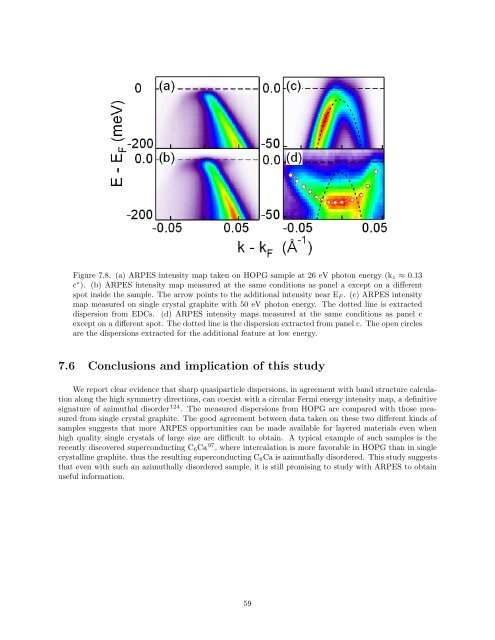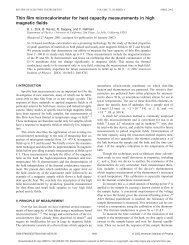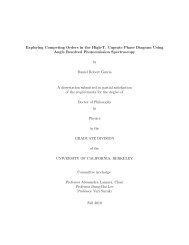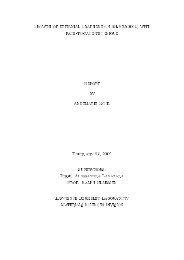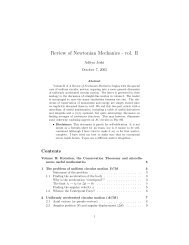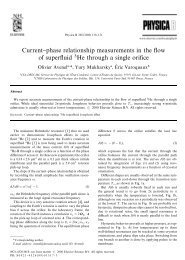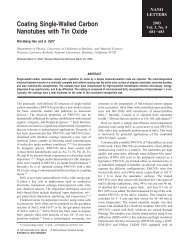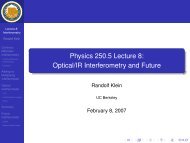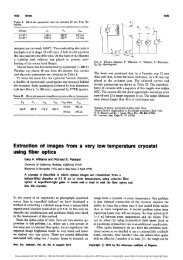Dirac Fermions in Graphene and Graphiteâa view from angle ...
Dirac Fermions in Graphene and Graphiteâa view from angle ...
Dirac Fermions in Graphene and Graphiteâa view from angle ...
You also want an ePaper? Increase the reach of your titles
YUMPU automatically turns print PDFs into web optimized ePapers that Google loves.
Figure 7.8. (a) ARPES <strong>in</strong>tensity map taken on HOPG sample at 26 eV photon energy (k z ≈ 0.13<br />
c ∗ ). (b) ARPES <strong>in</strong>tensity map measured at the same conditions as panel a except on a different<br />
spot <strong>in</strong>side the sample. The arrow po<strong>in</strong>ts to the additional <strong>in</strong>tensity near E F . (c) ARPES <strong>in</strong>tensity<br />
map measured on s<strong>in</strong>gle crystal graphite with 50 eV photon energy. The dotted l<strong>in</strong>e is extracted<br />
dispersion <strong>from</strong> EDCs. (d) ARPES <strong>in</strong>tensity maps measured at the same conditions as panel c<br />
except on a different spot. The dotted l<strong>in</strong>e is the dispersion extracted <strong>from</strong> panel c. The open circles<br />
are the dispersions extracted for the additional feature at low energy.<br />
7.6 Conclusions <strong>and</strong> implication of this study<br />
We report clear evidence that sharp quasiparticle dispersions, <strong>in</strong> agreement with b<strong>and</strong> structure calculation<br />
along the high symmetry directions, can coexist with a circular Fermi energy <strong>in</strong>tensity map, a def<strong>in</strong>itive<br />
signature of azimuthal disorder 124 . The measured dispersions <strong>from</strong> HOPG are compared with those measured<br />
<strong>from</strong> s<strong>in</strong>gle crystal graphite. The good agreement between data taken on these two different k<strong>in</strong>ds of<br />
samples suggests that more ARPES opportunities can be made available for layered materials even when<br />
high quality s<strong>in</strong>gle crystals of large size are difficult to obta<strong>in</strong>. A typical example of such samples is the<br />
recently discovered superconduct<strong>in</strong>g C 6 Ca 97 , where <strong>in</strong>tercalation is more favorable <strong>in</strong> HOPG than <strong>in</strong> s<strong>in</strong>gle<br />
crystall<strong>in</strong>e graphite, thus the result<strong>in</strong>g superconduct<strong>in</strong>g C 6 Ca is azimuthally disordered. This study suggests<br />
that even with such an azimuthally disordered sample, it is still promis<strong>in</strong>g to study with ARPES to obta<strong>in</strong><br />
useful <strong>in</strong>formation.<br />
59


